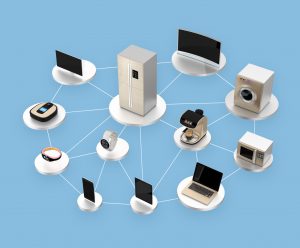At CES this year, one of the key topics has been Internet of Things adoption. The IoT has gone from an industry buzzword to a very real phenomenon affecting every one of us.
Doug Wagoner’s keynote speech focused on the how the combination of government and citizen use of the IoT could see up to double Gartner’s predicted figure of 25 billion internet-connected items and hit 50 billion devices within the next five years, says Michael Hack, senior vice president EMEA Operations, Ipswitch.
New Internet of Things (IoT) technologies including, smart meters, eWallets and wearables have become exceedingly popular. It doesn’t end there either. Industry 4.0 and the rise of the ultra efficient ‘Smart Factory’ looks set to change the face of manufacturing forever, using connected technology to cut waste, downtime and defects to almost zero.
But away from all the excitement, there is a growing concern amongst IT teams about how existing corporate networks are expected to cope with the enormous amount of extra strain they will come under from the increasing number of devices and applications. With many having only just found a way to cope with trends such as Bring Your Own Device (BYOD), will the IoT’s impact on business networks be the straw that finally breaks the proverbial camel’s back?
I wanted to look at a couple of key areas most likely to be giving IT teams taking care of companies’ networks sleepless nights and how they can be addressed. If done effectively, not only can the current IoT storm be weathered, but businesses can begin building towards a brighter, more flexible future across their entire network.
1) Review network infrastructure for potential bandwidth bottlenecks
Efficient use of network or infrastructure monitoring tools provide a central, unified view across every aspect of networks, servers and applications, not only giving the IT team a high level of visibility, but also the ability to isolate root causes of complex issues quickly. They can also allow the IT team to identify problems that only occur intermittently or at certain times by understanding key trends in network performance. This could be anything from daily spikes caused by employees all trying to remotely login at the start of the day, to monthly or annual trends monitored over long periods of time. Knowing what these trends are and when they will occur gives the team essential insight, allowing them to plan ahead and allocate bandwidth accordingly.
2) Benchmark for wireless access and network impact
The vast majority of IoT devices connecting to the business network will be doing so wirelessly. With wireless access it is critical to understand how a large number of additional devices connecting this way will impact on overall network performance. By developing a benchmark of which objects and devices are currently connecting, where from, what they are accessing and how it affects the IT infrastructure, businesses can get a much better picture of how the IoT will impact on their network bandwidth over time.

By benchmarking effectively, businesses can identify any design changes needed to accommodate growing bandwidth demand and implement them early, before issues arise.
3) Review policies – Security and compliance
In heavily regulated industries such as financial, legal and healthcare, data privacy is of utmost importance, with punishments to match. Implementing an IoT solution that handles this data can be an uphill struggle. New EU data privacy laws will affect any business that collects, processes, stores or shares personal data have recently been announced, and it can be difficult to ensure compliance if it isn’t clear who or what has access to the network.
As more and more Internet enabled devices begin to find their way onto the corporate network, businesses must sit down and formulate their own plans for addressing the problem, based on their own specific business challenges. Taking the time to do this now, rather than later, will undoubtedly pay dividends in the not-too-distant future. When it comes to security and compliance, no business wants to be playing catch up.
The Internet of Things marks another key landmark in the digitisation of the world as we know it. However, it also presents unique challenges to businesses and the networks they rely on. Addressing just a few of the key areas outlined above should help IT and network teams avoid potential disruption to their business (or worse) as a result of the IoT.
The author of this blog is Michael Hack, senior vice president EMEA Operations, Ipswitch.
Comment on this article below or via Twitter: @IoTNow_ OR @jcIoTnow










